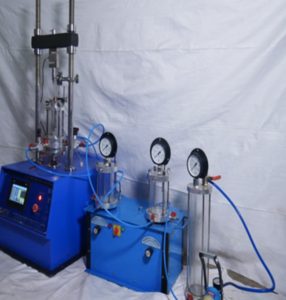What Role Do Soil Nutrient Tests Play in Maintaining Lush Ornamental Gardens?
A vibrant ornamental garden is more than just good design and seasonal blooms—it starts with what’s hidden below the surface1. Soil nutrient testing gives gardeners the blueprint they need to nurture strong, colorful, and resilient plants. Without proper nutrient balance, even the best plant selections can struggle. Through regular soil testing, you can take the guesswork out of fertilizing and build a garden that thrives from the roots up2.
Key Nutrients Analyzed in Soil Tests for Ornamental Plants
Soil nutrient tests typically measure both macronutrients3 (needed in large amounts) and micronutrients4 (essential in small amounts). Each plays a different role in plant health, growth, and flowering.
Common Nutrients Tested:
- Nitrogen (N): Promotes lush green foliage.
- Phosphorus (P): Supports strong roots and abundant blooms.
- Potassium (K): Aids in disease resistance and overall plant vigor.
- Calcium (Ca), Magnesium (Mg), Sulfur (S): Secondary nutrients essential for cell function and photosynthesis.
- Micronutrients like iron (Fe), manganese (Mn), zinc (Zn), and boron (B): Crucial for chlorophyll formation and flower color.
| Nutrient | Function in Ornamentals | Deficiency Symptoms |
|---|---|---|
| Nitrogen (N) | Leaf growth, stem elongation | Yellowing of older leaves |
| Phosphorus (P) | Root development, flower production | Weak blooms, purpling of leaves |
| Potassium (K) | Water regulation, disease resistance | Leaf edges turn brown or curl |
| Iron (Fe) | Chlorophyll synthesis | Yellowing between leaf veins (chlorosis) |
Understanding these values helps ensure your garden gets exactly what it needs—and nothing it doesn’t.

Interpreting Nutrient Test Results to Prevent Plant Deficiencies
Once you’ve tested your soil, the results will likely fall into categories like low, sufficient, or excessive. Reading these correctly allows you to make smart adjustments before symptoms appear.
Example Soil Test Interpretation
| Nutrient | Test Result | Action Required |
|---|---|---|
| Nitrogen | Low | Apply a nitrogen-rich fertilizer |
| Phosphorus | Sufficient | No immediate action needed |
| Potassium | High | Avoid adding more; risk of toxicity |
| Iron | Deficient | Use iron chelate or adjust soil pH |
Using test data prevents you from over-fertilizing, which can harm plants and pollute nearby water sources. It also helps you spot hidden deficiencies before they affect plant appearance.

Amending Soils with Fertilizers Based on Nutrient Test Findings
Soil tests are not only diagnostic—they’re instructional5. Once you know what’s lacking, you can apply the right type and amount of fertilizer6 to correct the imbalance without waste.
Fertilization Tips Based on Test Results:
- Low N: Apply a balanced or high-nitrogen fertilizer (e.g., 10-5-5) to promote foliage.
- Low P: Use bone meal or a bloom booster (e.g., 5-10-5) for stronger roots and flowers.
- Low K: Use potash or wood ash (if appropriate) for improved stress tolerance.
- Micronutrient Deficiencies: Apply chelated micronutrient blends or foliar sprays for quick absorption.
| Condition | Recommended Amendment | Application Frequency |
|---|---|---|
| Nitrogen-deficient soil | Blood meal, urea, fish emulsion | Every 4–6 weeks during growth |
| Acidic soil low in Fe or Mn | Chelated iron or manganese sulfate | As needed, based on symptoms |
| Balanced soil | Organic compost or slow-release mix | 1–2 times per season |
Proper fertilization leads to stronger plants, longer blooms, and lower maintenance.

Long-Term Soil Fertility Management Guided by Nutrient Test Data
Soil tests aren’t just a one-time fix—they’re tools for building long-term garden health7. By tracking nutrient levels year to year, gardeners can adjust their maintenance plan, prevent nutrient depletion8, and foster a self-sustaining soil ecosystem9.
Best Practices for Ongoing Fertility:
- Test every 1–2 years, especially in intensively planted beds.
- Use organic matter like compost to improve nutrient retention.
- Practice mulching to reduce leaching and maintain even soil moisture.
- Avoid repeated use of high-nitrogen fertilizers without re-testing.
Sample Fertility Maintenance Schedule
| Season | Action | Goal |
|---|---|---|
| Early Spring | Test soil; add compost | Prep for growing season |
| Mid-Summer | Spot-treat based on plant performance | Correct emerging deficiencies |
| Fall | Apply slow-release fertilizer | Strengthen roots for winter |
This data-driven approach helps you grow a lusher, more resilient garden—without guesswork.

Conclusion
Soil nutrient tests are the secret to maintaining healthy, eye-catching ornamental gardens. By analyzing what’s happening below the surface, you can prevent deficiencies, apply the right amendments, and build a soil foundation that supports vibrant growth year after year. When the roots are happy, the flowers show it.
-
Understanding what lies beneath your garden is crucial for plant health. Explore this link to learn more about soil health and its impact on gardening success. ↩
-
Discover the importance of root health in gardening. This resource will provide insights on how to cultivate a thriving garden from the ground up. ↩
-
Understanding macronutrients is crucial for optimizing soil health and ensuring robust plant growth. Explore this link to learn more! ↩
-
Micronutrients are vital for plant health. Discover their roles and how to test for them to enhance your gardening success! ↩
-
Exploring this resource will help you understand how instructional soil tests can guide effective fertilization and improve soil health. ↩
-
This link will provide insights on selecting the appropriate fertilizer, ensuring efficient use and better crop yields. ↩
-
Exploring this resource will provide insights into sustainable gardening practices that enhance soil and plant vitality. ↩
-
This link will offer strategies to maintain soil fertility and ensure your garden thrives over time. ↩
-
Discovering this concept will help you build a resilient garden that requires less intervention and promotes natural growth. ↩







